Failure "Typhoon"
PU OTR increased range Temp-C
In the second half of the 1950s. with the beginning of hard work on the accelerated creation in the USA of a strategic submarine nuclear missile system "Polaris" anti-submarine defense (PLO) from a particular problem of the Naval fleet turned into the most important national task of the USSR. By the end of the decade, the party and the government adopted a series of decrees prescribing the creation of new ships and weapons PLO.
Along with the work on traditional types of anti-submarine weapons, a decree of 20 in June 1958 of the Scientific Research Institute-1 (State Committee for Defense Equipment, or CCFU) asked for experimental design work on the creation of a “vortex” depth charge bomb with a special charge. It was intended to defeat submarines, reaching at depths up to 400 m at a distance from 4 to 24 km from a shooting ship. This work was successfully completed on 12 on June 1968 by adopting the anti-submarine complex Vikhr (chief designer - NP Mazurov), which equipped anti-submarine cruisers of 1123 avenue (Moscow, Leningrad) and the first three ships of the ave. 1143 ("Kiev", "Minsk", "Novorossiysk").
Anti-submarine missile complex RPK-1 "Whirlwind
In addition, the resolution of GKOT 1958 was charged with working out the issue of creating a coastal anti-submarine system with a depth charge with a special charge to protect against the penetration of enemy submarines into naval bases using the Ukhta hydroacoustic line. The studies were to be carried out in relation to the distance from 50 to 150 km.
The results of the research work under the name "Typhoon", entrusted to the Scientific Research Institute-1 (chief designer - NP Mazurov), confirmed the fundamental possibility of creating missiles for such a system. When equipped with powerful special charges, the rocket could also be used against enemy surface ships, for example, in order to disrupt the enemy assault. Considering that at that time the production of the 130-mm coastal gun CM-4 and the chief designer GI were going on at the Barricades plant. Sergeyev was well aware of the specifics of its operation, ordering the management of the Navy recommended SKB-221 to create a starting device for the new coastal complex.
SKB-221 was entrusted with the R & D of KM-3-340-58 "Creating a coastal jet system with depth charges with special charge." The designers had to work out at the engineering note level of land-based stationary equipment to ensure the launch of the Typhoon missile. In terms of technical characteristics, the missile and ground equipment were supposed to surpass all coastal complexes in service.
BR-219-1 Fixed Launcher
Despite the fact that the stationary basing scheme had to be designed by the barricades for the first time (earlier projects concerned drilling complexes and artillery systems), the task was completed in just two months.
This topic was dealt with in department No. XXUMX under the direction of V.I. Heifetz, specifically - a group of BCRomanenko-va. The report on the implementation of the thematic card emphasized the possibility of creating a mine variant of the ground complex for the Typhoon rocket (weighing 6 tons) with the aim of concealing an atomic strike against enemy targets. But NII-9 experts rejected mine options on the seashore due to the high cost of building hermetic structures for such a huge rocket.
Already in July, 1958 was launched by the barricades of the BR-219-1 launcher, based on the experience of the Central Research Institute-34 (MAKKB, now KBSM), which created the launch facilities for the Navy: CM-59 , CM-59-1, CM-59-1 for launching cruise missiles of the KSSCh type; CM-64 to run ZUR B-750.
The new version of the stationary ground-based launcher (the author is Yu.N. Matsapura1) was the base of the thumb type, which housed the swinging part and rooms for personnel. At the height of more than 5 m, there was an axle of axles for supporting a rail with a length of 12 m. The length of the starting path was 8 m. The weight of the entire structure reached 48 t.
When reviewing this project, the most complaints were about loading the launcher, since
the object became even more thundering and noticeable with the presence of missile overloading facilities.
Then rocket engineers, already with A.D. Nadiradze (he joined XI NUMX 1 in May 16 as head of the Special Design Bureau and Assistant Deputy Director for Research and Development), it was decided to expand the missile options with a decrease in their weight characteristics. The SRI-1958 designers proposed a Typhoon-1 rocket weighing 1-5,5 t, while SKB-6 specialists continued their activities in relation to this option, while continuing to work on the PU for a heavy rocket. G.I. Sergeyev immediately proposed a mobile version of the launcher, and in the stationary complex the mine should not be run vertically, but horizontally. We agreed to this, but with the observance of the sequence of development: first, the mobile version of the PuDl for the Typhoon-221 rocket, and then the spare version, the stationary one, according to the horizontal mine scheme.
At the end of 1958, 111 was issued, which did not provide for linking the future complex to a specific location of the coastline. G.I. Sergeyev and the project implementers, including the head of the missile development department from NII-1, V.I. Eliseev, visited many military units that were supposed to equip the new complex. We studied maps, terrain, coordinates of some of the bays of the conditional enemy, which should in case of conflict be locked up with minefields using the new Typhoon-1 missiles.
At 1959, an agreement was signed between SRI-1 and the Barricades plant, which determined the completion of work in May. 13 January 1959, Deputy Head of Department No.6 OKB-221 G.M. Belyaev registered the following development indices:
- BR-219 - stationary PU for the "Typhoon" system;
- BR-221 - transport and charging machine (TZM) for fixed installation of the "Typhoon" system;
- BR-222 - mobile PU of the "Typhoon-1" system;
- BR-223 - TZM for PU Typhoon-1.
An unheard of complex issues has fallen on developers. And if you take in attention
Since the circumstance that only 6-8 people could identify on this topic, it is clear what load lay on each of them.
I must say that already at that time with the filing of G.I. Sergeev OKB-221 began to specialize in the development of mobile launchers. And this time, efforts were first focused on the BR-222 project. As a result, two schemes appeared: PU based on the original wheeled trailer behind the MAZ-537B tractor (developed by VP Tsarev) and PU on the same trailer behind the AT-T tracked tractor (developed by Yu.N. Matsapura).
The PU on a three-axle wheeled trailer included the following main elements: the swinging part (developed by IS Efimov) weighing 4800 kg (guide length 10 m and with a longitudinal groove of the length to ensure the passage of the rocket yoke); balancing mechanism (author - F.Ya. Larin) and automatic rammer (author - VG Sorokin).
Paired with PU BR-222, designed TZM BR-223 (author - OP Medvedev). The undercarriage was a trailer MAZ-5202, on which was placed a platform for one rocket. The platform could be deployed and raised to a height of 800 mm with an effort on the 27 kg handle. TZM as well as PU, transported wheeled or tracked tractors.
The loading scheme was interesting. TZM could be installed relative to PU, not only at an angle of 90 °. The combination of the rocket axes lying on the TZM and the PU guide was achieved by turning the platform. 5 minutes were allocated for this operation. Then the platform was raised with a rocket (1 min). Next, the rocket fell on the guide and was sent to the fixing (15 min was assigned to the loading).
PU, TZM and loading scheme suited many. But there were suggestions to exclude the trailer from the complex. The development in OKB-221 of the deployment of the Typhoon rocket weighing more than 6 tons on one chassis was one of the first such attempts in the country. In 1955, the joint venture. The Queen managed to place his 8K missile weighing 11 tons on the chassis tank IS-2 (PU 2P19). Now, the weight of the rocket was almost 2 tons more.
Having received a positive assessment of the research institute-1, the barricades began to solve this problem. Several variants of PU were proposed.
BR-222-I
Option self-propelled launcher, designed by N.K. Smolyakov meant the placement of the SPU artillery unit on the basis of the Kharkiv 408 Object chassis.
BR-222-II
Option self-propelled launcher, also proposed N.K. Sm-l'yakov, provided for the placement of the artillery unit at the 273 Object, which was developed at KB-2 of the Leningrad plant to them. Kirov and was intended as a conveyor 2Т1 for self-propelled 420-mm mortar 2B1 "Oka".
However, the chassis capabilities “Object 408” and “Object 273” clearly did not correspond to the placement of such a heavy load (this was especially true for the version of the BR-222-P). I had to return to the rocket of a smaller weight.
BR-222-III
On the conveyor "Object 408" N.K. Smol'yakov placed an art unit for the rocket under the “Typhoon-IV” index (the weight of this rocket was reduced almost by half). This PU allowed launch in all directions.
BR-222-IV
N.K. Smolyakov placed a rocket under the name Typhoon III on the wheeled chassis of the MAZ-537B, i.e. now this chassis was used not as a tractor, but as a carrier.
BR-222-V
The unit for the Typhoon-III missile was located by Yu.N. Matsapura on MAZ-529В chassis.
However, elementary calculations showed that all conceived versions of self-propelled launchers do not withstand enormous loads. I had to re-work the PU layout on the trailer.
BR-222-VI
Trailer version with PU for MAZ-537B, only the trailer was used not four-axle, but four-axle, of the original design. The implication was two rocket positions. The rocket in the stowed position was placed slightly ahead, and at the launch position it had to be shifted back almost 2 m. All this was dictated by the “struggle” with weight and ensuring the stability of the launcher during launch.
12 May 1959 was held NTS at OKB-221, which were considered all options PU complex "Tafun". The BR-222-VI and TZM BR-223 projects developed by Yu.N. Matsapura and O.P. Medvedev. Also in the report of the technical council the following was recorded:
“... The preliminary design was reviewed and compiled by 2-sided act from 15.5.59 on the implementation of the topic. The preliminary design is to put pressure on the conclusion of the GNOT 1 and the NS-1 GKOT 3.
In Moscow, consideration of options for the Typhoon complex continued. And it is interesting that the designers, SRI-1 defended the pre-sketch. 'Design of the scheme and completeness of the rocket, and the designers of the OKB-221 - only the advance design.
Therefore, in the conclusion it was said:
“The results of the development of the issue of creating a coastal anti-submarine anti-submarine jet bombs and using the Ukhta hydroacoustic line as detection tools should be referred to the Navy organizations and developers of the special charge KB-25 ...
OKB-221 to submit for approval proposals for the further implementation of these works on the launcher. "
It was recommended to further develop the mine option, but with the placement of the mine is not vertical, but, as already mentioned, horizontally. The circuit design of the BR-219-1 was performed by the designer O.P. Medvedev. The result was a horizontal shaft with a minimum length of 75 m, the width in some places reached 18 m. All elements of the new version could be accommodated at the sites.
These elements worked out:
- gm Belyaev - TZM BR-221 on ZIL-131;
- N.K. Smol'yakov - trolley for transporting the product (lifting speed 0,02 m / s, traveling speed 0,33 m / s);
- V.P. Tsarev, Yu.N. Matsapura, F.Ya. Larin, N.I. Yelansky, V.G. Sorokin, I.S. Efimov - PU;
- V.K. Soloshenko - roofs movement mechanism (weight 40000 kg, opening time 25 s).
Thus, the entire composition of the BC Romanenko group participated in the design of the horizontal shaft and elements of the Typhoon start-up complex.
This project was also sent for expertise to specialists of the Scientific Research Institute-1. As N.P. later recalled. Mazurov, the project's defense was transferred to 1 -th SCFOT Department. It took place on 9 on June 1959. N.L. was invited to the meeting. Dukhov, head of KB-25 (now - All-Russian Scientific Research Institute of Automatics named after NL Dukhov). His conclusion on the developments of the atomic mine was awaited. Nikolai Leonidovich said something like the following: “... The lack of warranty accuracy characteristics and especially short ranges are not acceptable for the use of a nuclear warhead, especially in the fight against the landing force. Do not forget that the landing place is not only the coast. This is, above all, the cradle of the origin of life on Earth. To spoil him is to ruin oneself ... ”
Further discussion of the analysis showed that the use of a special charge using PU and a Typhoon rocket is not safe for both warring parties.
Underwater explosions could cause significant radioactive contamination of the area. In addition, nuclear explosions in the waters adjacent to the naval base could damage the sonar facilities placed on the seabed and on the coast (including stationary), as well as lead to the death of their ships and ships in the danger zone. Based on this, after reviewing the results of preliminary studies of several missile variants with different maximum launch ranges in 1959, work on this topic has practically ceased.
Released in 2003, the book AV We-Selovsky "Nuclear Center (notes of a nuclear weapon tester)" lifts the veil over the reasons for such a decision. In particular, it says: “... Since we, the developers of products with special charges, presented the effects of using products with nuclear warheads better than the military, security issues were very serious among us. From this, we were taught by the scientific director and the first chief designer, academician Yu.B. Khariton He demanded scrupulous study of virtually all safety issues throughout the entire life cycle of a nuclear weapon, starting from manufacturing at a production plant, operating in the military and beyond. Our operational documentation (ED) has always been a guarantee that the products are safe, subject to the requirements of the ED ... "
In addition, the creation of the system as a whole, including the solution of problems of detecting and classifying targets,
the issuance of target designation to the combat vehicles of the complex with temporary delays that did not lead to unacceptable aging of information could only be carried out at a higher level of technological development.
Thus, the Typhoon coastal missile system for the delivery of depth charges with a special charge did not receive a start in life.
What ended up with these studies for SRI-1 and OKB-221?
In 1961, naval bombs with mechanical loading of the Smerch-2 and Smerch-3 for salvo and single firing were adopted by the Navy. The designers NII-1 and TsNII-34 worked on them. As for the OKB-221 designers, they did not have to rest. On the day of the closing of the "Typhoon" theme, it was announced the start of work on the Temp missile system. The experience obtained with this was very helpful.
Mine launcher BR-219.
- A.F. Ryabets, Leading Engineer, TsKB Titan, winner of the prize named after Chief Designer G. I. Sergeev
- Equipment and weapons
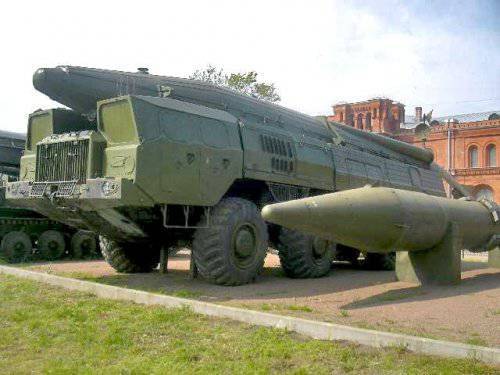
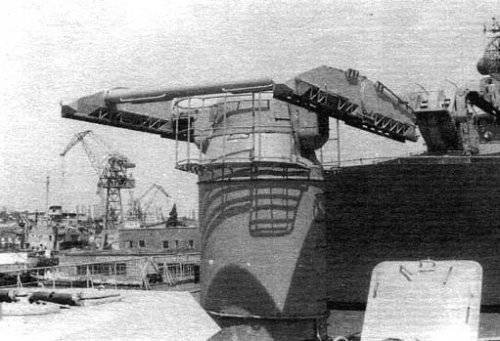
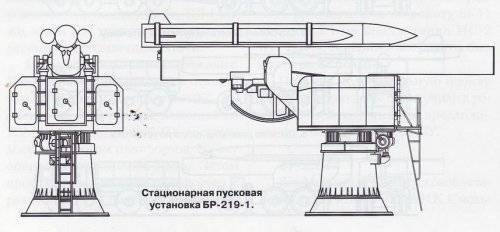
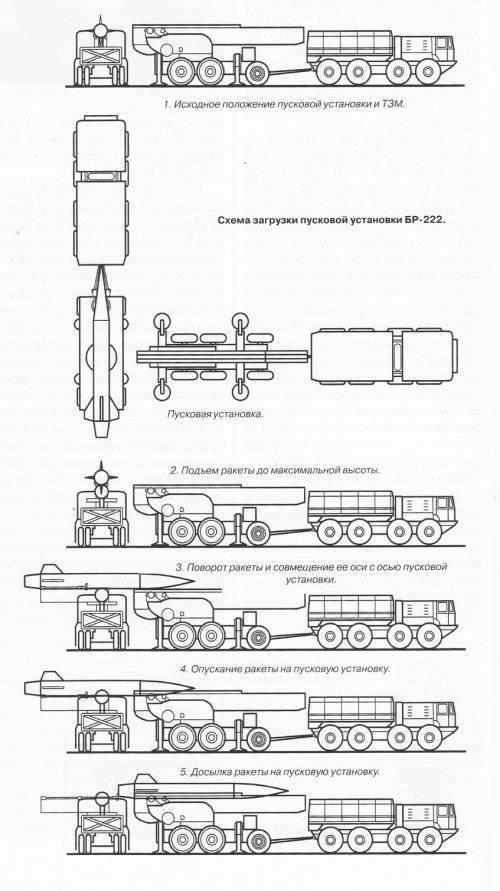
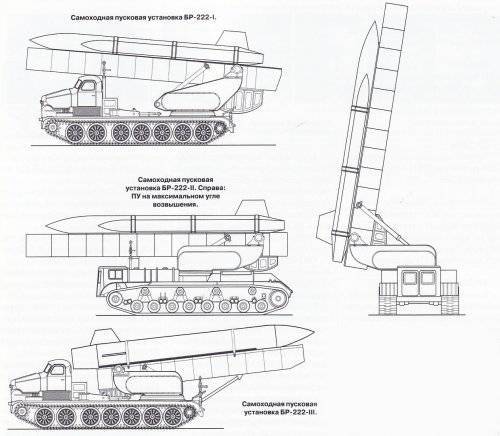
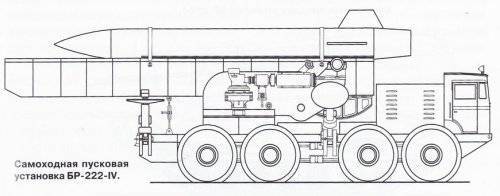
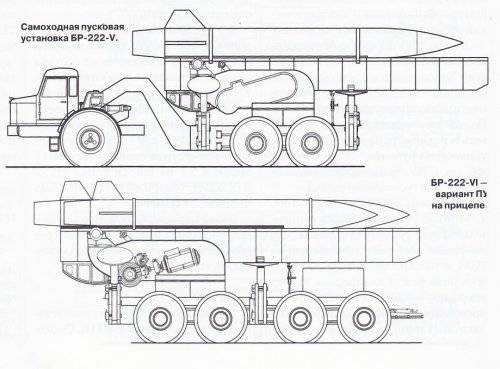
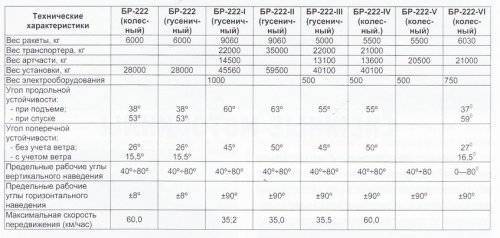
Information